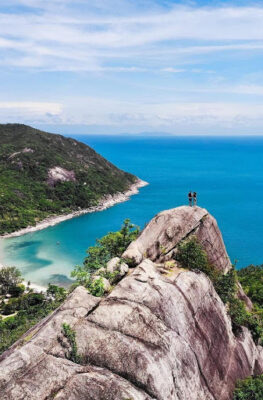Published on December 21, 2017

Tourists trekking in Thailand. Image courtesy of the Tourism Authority of Thailand.
Singaporean photographer and travel writer Jeremy Goh Guo-Hua joins us for a guest post that explains how to minimize risks when exploring the region’s less-trafficked trails. Check out Jeremy’s writing (and photography) at Asia361. Follow Jeremy’s work at Trippin’ Creatives website, or visit their social media profiles on Facebook, Twitter, Instagram and Youtube.
Traveling in Southeast Asia is not completely absent of risk. Travelers who seek more off-the-beaten-path sights might unwittingly wander beyond the protective reach of lawful authorities – leaving them without a fallback should the worst occur.
Fortunately, following a few simple rules can lessen the chance of unfortunate incidents. These tips can come in handy in crowded cities and isolated hamlets alike!
Be prepared for anything
Know your terrain, dress for it. Be aware of where you are, where the safe places are and the areas with the most risk. For example, if in a tight spot, you would want to know the location of your hotel or nearest police station. You certainly don’t want to run haphazardlyinto a lonely street or deserted park!
Likewise, you may want to wear running shoes or carry the bare minimum so that you can move to safety more quickly.
Observe your surroundings: plan for an escape or a retaliation if required. In a quickly developing situation, knowing your exit plan could make all the difference. Do you know where the building exits are? Is there some place to take shelter if needed, or are there useful items nearby if you need to defend yourself?
Similarly, keep a mental note of which items you are carrying that you can discard if you have to, or fill your pocket with decoy items and keep your valuable items in less accessible pockets.

Abandoned bus in Indonesia. Image courtesy of Goh Guo-Hua.
Be a smart traveler
Safety conditions can be very specific to the area – what works in Kuala Lumpur won’t necessarily work in Manila. Speak with locals to understand the safety situation – find out where riots and crime are most likely to occur in your neck of the woods.
The following tips may vary in use depending on where in Southeast Asia you’re currently visiting.
Be conspicuous. Before you head out for the day, let someone you can trust know of your plans. Arrange to check back with them after you return. When taking a taxi, let the concierge or bellboy take down the vehicle’s number and speak to the driver on your behalf.
Pay respect to local customs. When in Rome… Traditions are closely guarded as a part of a country’s identity, and going against it is sometimes misconstrued as impolite at best or an insult at the worst. A respectful person who observes the prevailing code of conduct is more likely to blend in, whereas someone who isn’t will stick out like a sore thumb and attract ire at the same time.
Stay sober. Inebriation leaves one in a vulnerable state. One’s reactions and judgements are compromised, painting a big red flag for thugs looking for a victim.
Limit your exposure to risk
When traveling through known trouble areas, limiting your time there lessens the probability that you encounter danger. It also reduces the chance that anyone noticed your arrival or prevents anyone from establishing your daily routine.
Similarly, minimize travel during the dawn and dusk hours. These are the riskiest times for travelers. Places with large crowds – festivals, carnivals and markets – can also be potentially dangerous places to linger.
Keep a low profile. The best thing about a wallflower is that it does not stick out – it’s hardly noticed by anyone. Blending in with the crowds help prevent one from being singled out as a target.






